Metz Railway Station
We arrived in Metz late at night in total darkness and checked into the Alerion Gare Hotel in Place Charles De Gaulle. In the morning, from the window of my room, I saw directly opposite the most monumental building of the railway station (Gare de Metz-Ville). This is one of the main attractions of the city, and here we will start our walk.
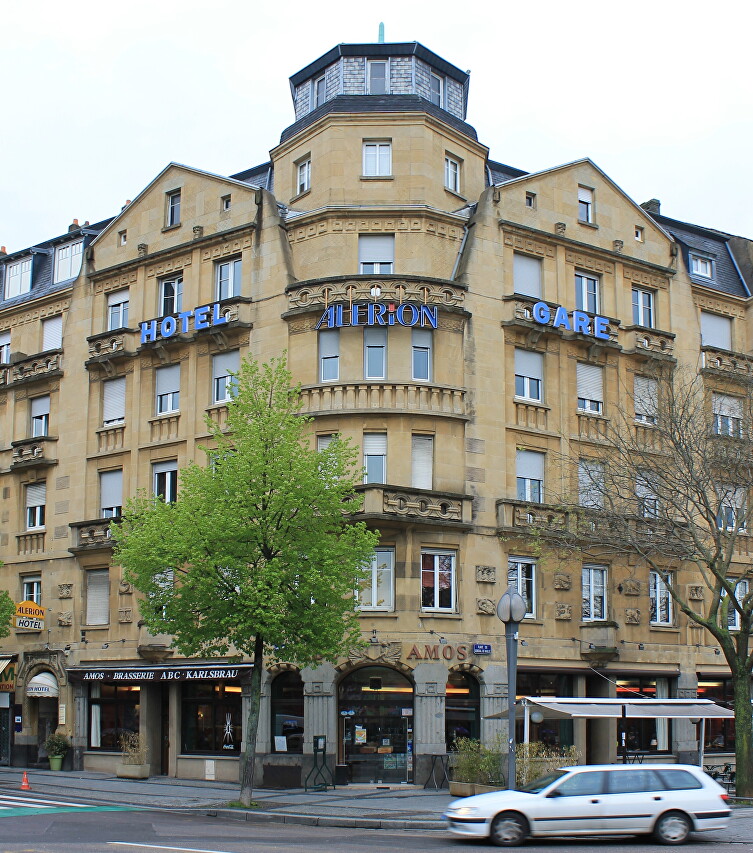
In 1871, Lorraine was annexed by Bismarck. The Kaiser attached particular strategic importance to its main city, where the railway junction connecting western and central Europe was located. His successor, William II, following the precepts of the great conqueror, ordered the construction of a station in the city primarily for military use, designed to quickly send a large number of troops.
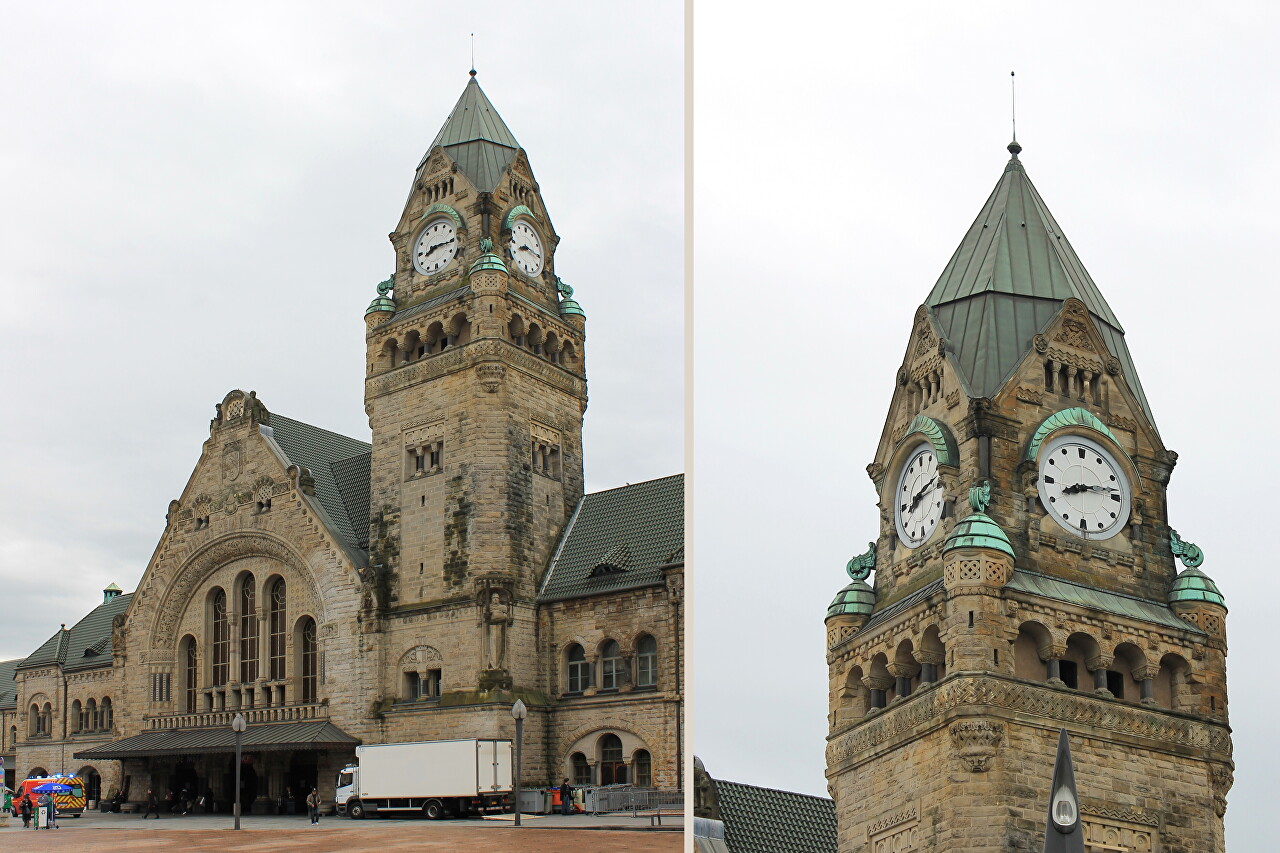
The station was built in 1905-08 by the Berlin architect Jürgen Kröger, who held the title of "Imperial Construction Adviser" (Kaiserlicher Baurat). The giant transport hub was able to pass through its platforms up to 20 thousand people a day. The platforms and entrances to them were adapted not only for landing people, but also for loading horses and artillery. The construction cost exceeded 29 million gold marks.
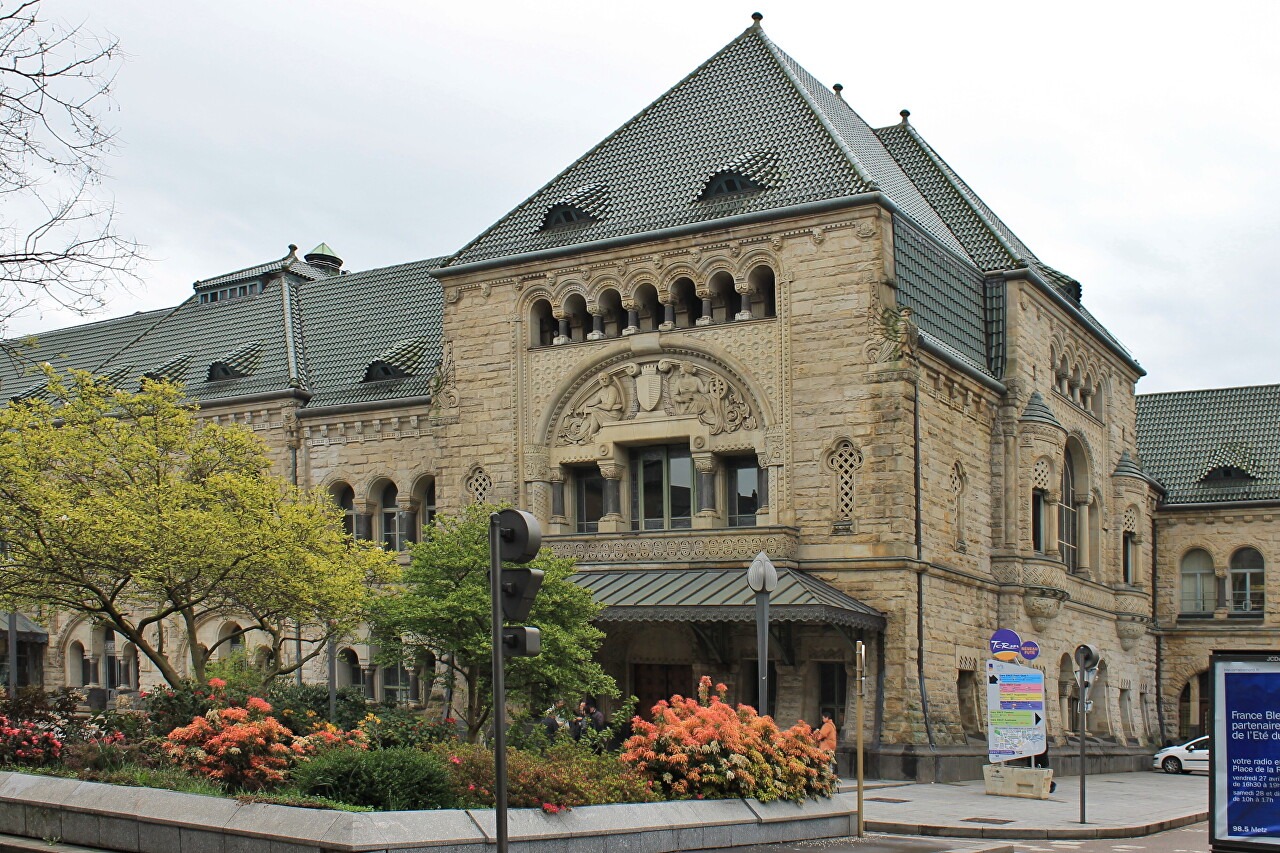
The architect made the first sketches in the Art Nouveau style, but William II wanted to have something more pretentious. As a result, a neo-Romanesque building was built, 350 meters long and with a clock tower 40 meters high. Because of the swampy ground, more than three thousand piles were driven in to build the station building and other station facilities, to a depth of 10 to 17 meters. The piles were made of reinforced concrete, which was an innovative solution developed by the French engineer François Hennebique. The facade design was made by the sculptor Schirmer and recalls the power of the Holy Roman Empire. The station also served as an official residence during the Kaiser's visits to Metz, and the building was equipped with royal apartments.
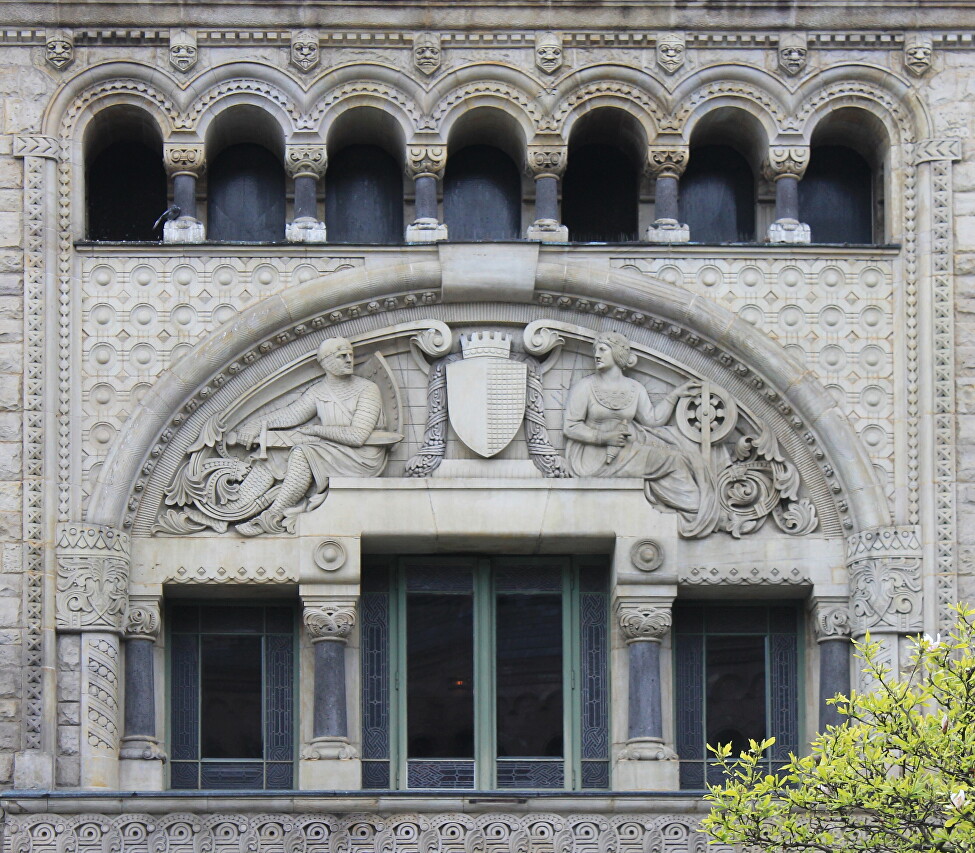
To the left of the station building is a water tower with a 300 cubic meter reservoir, also made in the neo-Romanesque style. Now it houses domestic premises for railway workers.
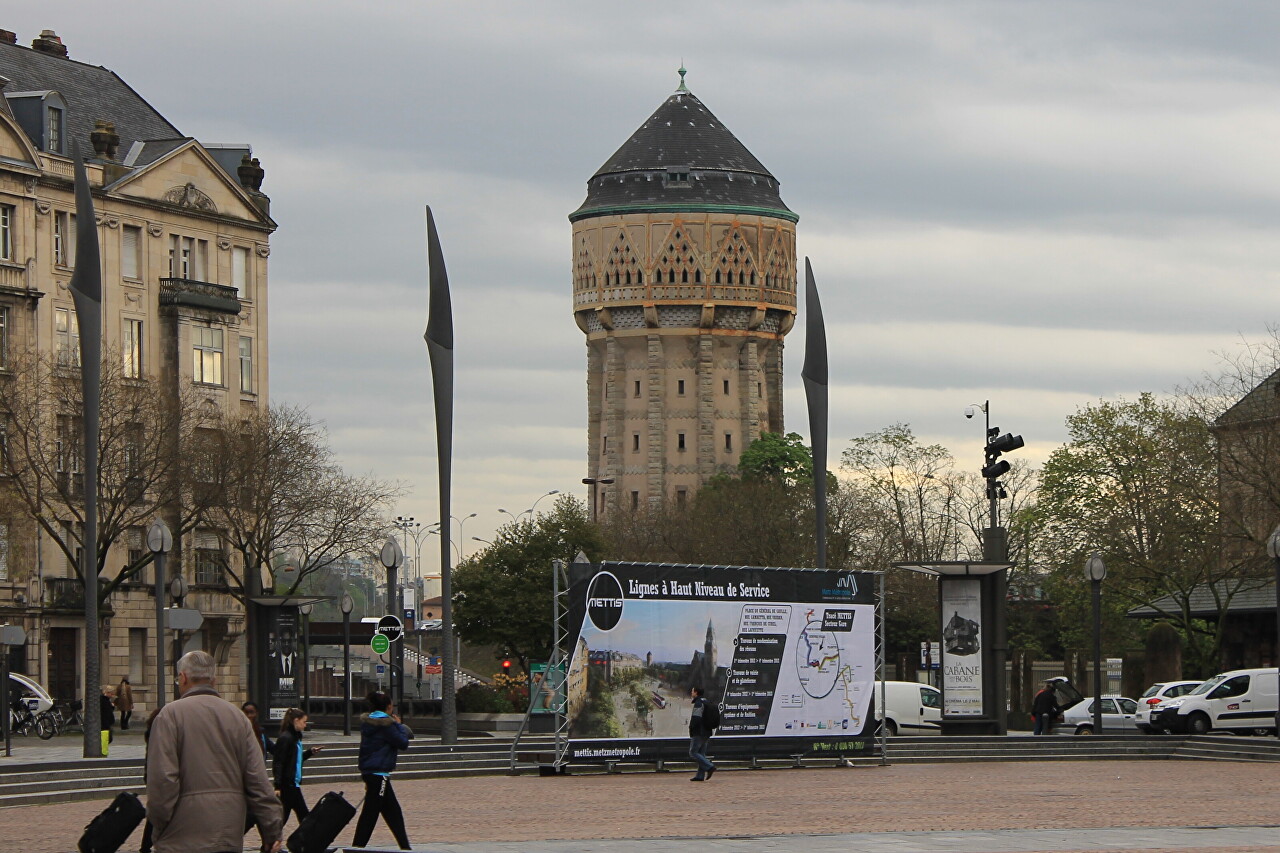
In the same period, a complex of buildings was erected opposite the station, which housed a large postal hub.
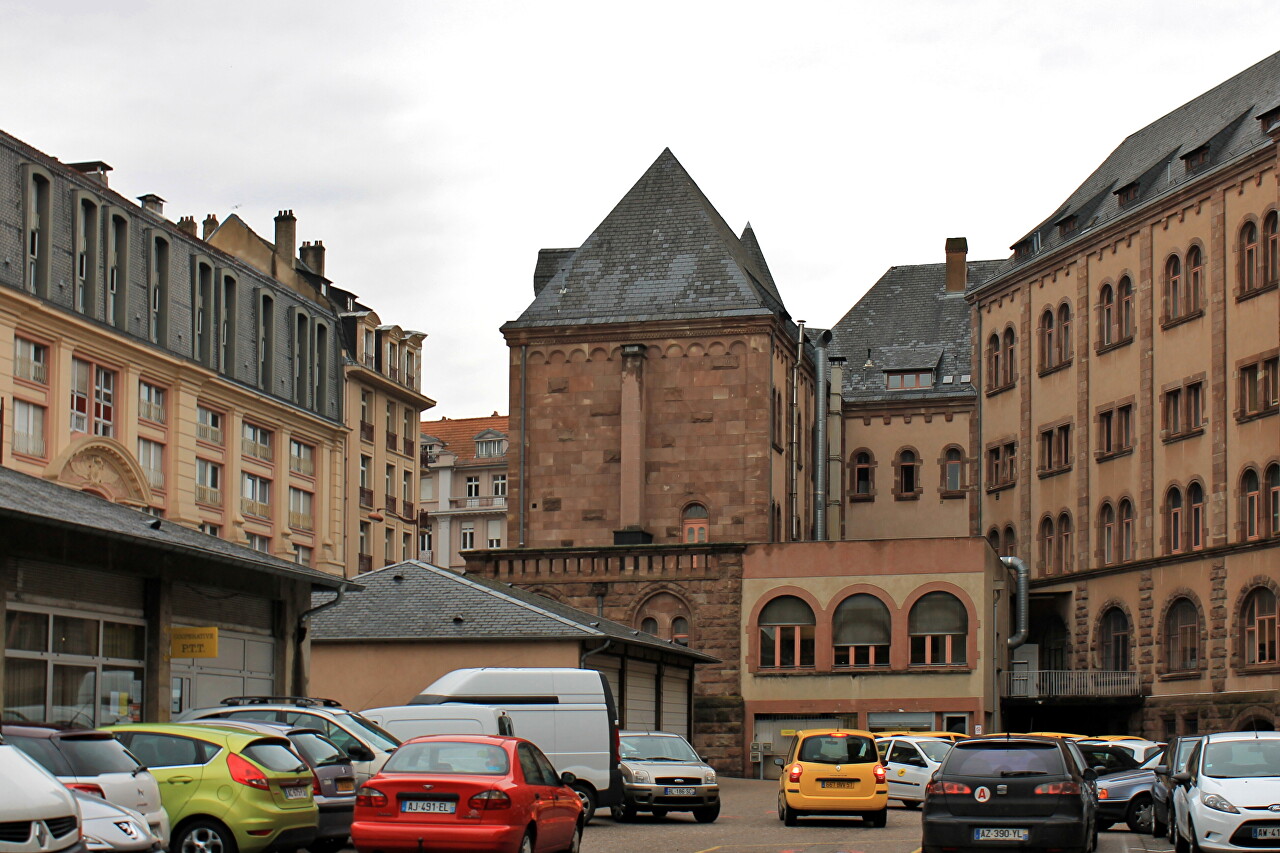
The Metz station building was added to the list of historical monuments on January 15, 1975.